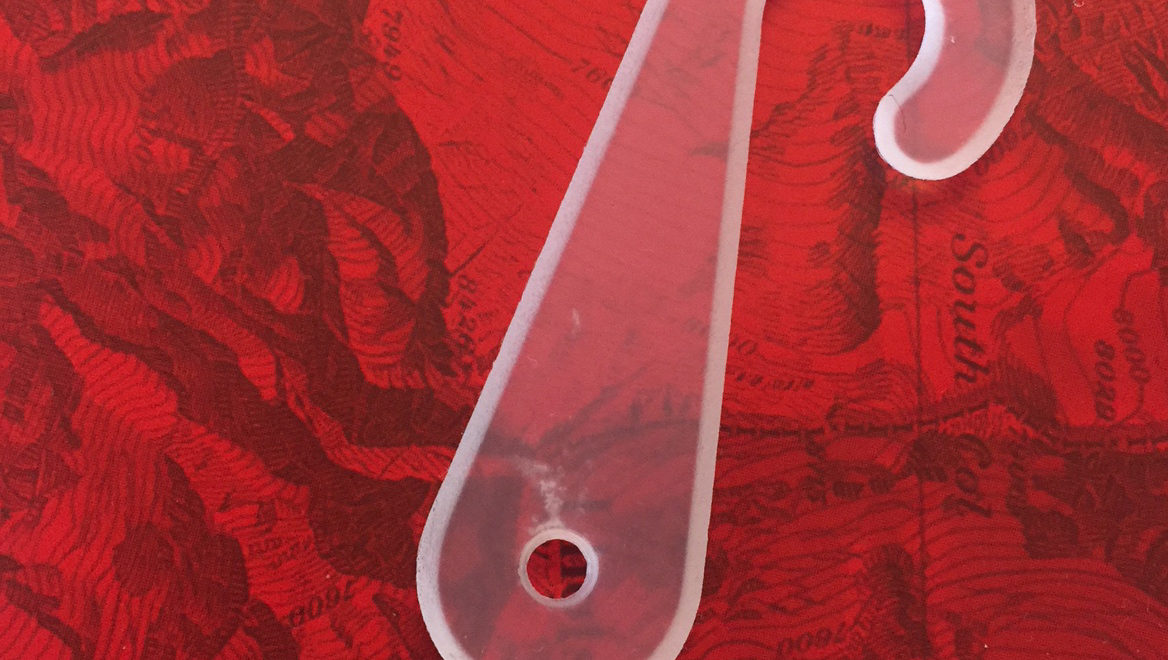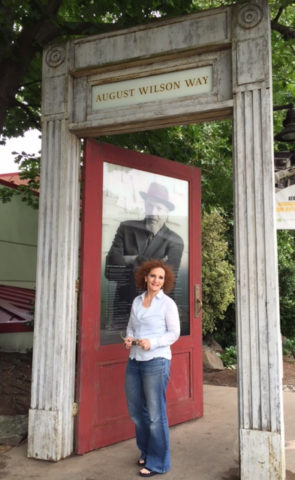Design on Display: Museum Workers, Designers and Professions Inbetween
Thursday, April 4th, 2013 @ Peter Miller Books
The Seattle Emerging Museum Professionals (SEMP) mixer and short panel discussion featuring professionals whose work and interests exist at the intersection of museum work, exhibit display and design. This event was coordinated in partnership with the Seattle Architecture Foundation (SAF.)
Questions to address:
- How did you arrive in your particular field? Where is your passion?
- What is your interaction with the museum field?
- Where do you think improvement could be made in museums, be it exhibition work, programing, marketing, etc?
Other:
- What is your favorite museum and why?
- In what ways should local communities influence exhibit design or be directly engaged in the design of exhibit or museum spaces in your ideal scenario?
Draft of my talk:
Hello.
I haven’t spoken in public in a while and I am out of practice. And, so that you know, my two teenaged children are helping to redefine “private” with all of the social networks, and I guess I am with them. I will be as open and honest as I can be. Ask me anything.
First of all, please allow me to tell you something about myself, as you may wonder why I wound up on this panel and also, if you are like me, you generally don’t fully listen to someone, especially when they are giving you advice unless you consider the source (and maybe hardly at all if it is your mother).
I am an artist. I am also a registered architect. And, after twenty-five years running my own business, I am also a very experienced exhibition designer. For those of you who need to know the creds, I went to Boston U where I received a BFA and MIT where I earned a Masters in Architecture (where the ratio was 1:5, female:male when I started). I was weaned in a male-dominated work world where I have tried to be a pioneer. I lived in Japan in my late twenties and worked as a carpenter there. After working in SF for Skidmore Owings and Merrill, John Holey and Associates, and HGBH (where I was Head of Interiors), as well as John Stewart Polshek, and Ralph Applebaum & Associates in NYC, I started my design business. First, in New York, then San Francisco, and then in Seattle in 1995. My first child was born in in SF 1994 and she was three months old when we moved here. Unlike some people for whom having a child means less formal working and less working time, I kicked into gear and only started to make real money after she was born. I figured that I had to earn money for her too…and also working keeps me sane. Relatively.
I like having a small business and I have kept it small to be involved in everything we do. I have also intentionally, to this point, kept the business regional to be near my growing family. When I started, my entrepreneurial mother told me “any idiot can spend money”. And so I began by working out of my house. I bought my first computer with my first check and the printer with the second check. I won an award for my first project, which was a garbage museum in Connecticut, and that was that. I was launched.
I have no excuses or regrets about having a boutique-sized design firm, although from the perspective of being impressive, this has not always worked in my favor. Until recently, it wasn’t sexy to work out of one’s house, especially as a woman. But I prefer the intimacy and I like to work hard.
Eventually, I moved to an office down the road from my house in Seattle (a 42 second commute), then two miles away, and now I am back again. This has allowed me to be in my kid’s lives (now my two kids are teens) and yet keep a good separation of church and state.
Lehrman Cameron Studio has been busy these past twenty-five years. I love working. I have worked on projects large and small. I have worked with museums – art, culture, children’s, science, flight –and places that are pseudo museums – such as music centers and visitor centers — places where learning is touchable, playable, interactive (even when “interactive” was only an early gleam in the museum world’s eye). I have worked on subjects like hydroelectricity and waste water (in fact, water is a major theme in most of my project. Interwoven is the history of people and landscape, and many many themes, topics, and subthemes that others might have learned in school and that I have had the great luxury of studying in detail and depth while making money.
I think that we have been an unusual firm, doing great amounts of work with few people. We have never been larger than nine, and that only for a short while. Usually we have four to six people. But we do a lot: research, writing, graphic design, exhibit design, planning, interiors, and architecture. Recently, clients have asked us to include interpretive landscape design with environmental graphics. We get to rotate the mental crops and the nutrients in our fields are never depleted. Occasionally, I get to do public art too.
Over twenty-five years in business for myself, I have almost always hired women (I used to say that was because “I like to hire the best”) and I have given them what surprisingly turns out to be a great deal of independence in my office. However, after the first ten years, my husband came into the business with me. He was a museum administrator at the Brooklyn Children’s museum in NY, Liberty Science Center in NJ, and the Exploratorium in SF. His job at the Jimi Hendrix Museum (now EMP) is what brought us to Seattle. I had enough hubris to think that I could make it anywhere. And after three years here, he joined me at Lehrman Cameron Studio. Max was the catalyst for my getting into museum work in the first place, although I have a strong personal relationship with museums through family members and throughout my childhood. Also, I am the Lead Designer on all of our projects and the philosophical foundation of our firm and its work. People have been interested to know how we have successfully worked together for so long. I can tell you another time if you are interested.
I recently stepped back to reconsider my work as an exhibition designer and to begin the process of more fully investigating my life in Art (starting with drawing, painting, writing…) I just finished writing my mother’s biography. After twenty five years, I am personally aiming for more purity, more mess, more solo flying. But I have been lucky to have had, for so long, all of the hard work and challenging times that go into exhibition design.
I have been asked to address the question of where I think improvements can be made in museums.
So that you know, Lehrman Cameron Studio has worked on every type of museum and visitor center mentioned on the American Association of Museums’ Wikipedia site: art, culture, history, science, military, maritime, and youth museums, as well as aquaria, zoos, botanical gardens, arboreta, historic sites, and science and technology centers.
I personally think of museums as special and sometimes even sacred places and I am especially fond of art museums. And, although I usually do not tell our clients, I measure all museums by the standard of the old Museum of Modern Art in NY which, to my mind, was nearly perfect in scale, subject, curation, interpretation, context, programming, and architecture. There were many reasons I loved it. Mostly though, it was because the works of art were the primary experience and everything else played a perfect supporting role.
So how can museums improve? It seems to me that museums should consider what they offer that cannot be found anywhere else. The experience of an exhibit should be better than what you can find at home. It has to be more than a website, more than a tv show, digital program, or app. It has to be authentic. I like to ask clients “Is this an exhibit? Should it be something else; a book, a performance, a game?” The museum experience needs to have a unique, and specific quality, much of which comes from the building and the context itself: the architecture and the approach. And much of the impact of an exhibition comes from the anticipation, the PR, the marketing, and the related programming. But then, it all hinges on the presentation and interpretation of the collection, the objects; what is chosen to be on display, why, in what proximities and rhythms, as well as the text and illustrative explanations (which can be on graphic panels, via docents, on headsets…) A museum experience is different than other types of experience because it is in a real place in real time with real objects, and a visitor had to travel to get there. It may be that within a museum, a visitor can have interactions with devices that may otherwise not be available to them, or have interpersonal exchanges that they wouldn’t have at home, or just have the incredibly special opportunity to see materials and things up close and personal in the right light at the right height, well explained.
I also think that there can often be something better about the museum’s relationship to outside designers. Lehrman Cameron Studio has worked for clients large and small, museums, private and public entities, and others …as planning only, planning and design, design-build, and many forms of contracts and relationships. I can tell you what it is like to work with and for a team for many years on one project and still keep a consistent, design vision as the work gets rolled over by budgets and habits. I can tell you how you can work with people you admire but don’t particularly like (that took me a long time to learn), or like but don’t admire (something I would like to avoid). I can describe the enthusiasm, optimism, and sincerity at the start of a project and how it gets retarded sometimes by the client’s knee-jerk, emotional, maybe even primal reaction to change and a clinging to familiarity. And I can tell you about what it takes to make a place of learning through objects and materials, the locations, dimensions, colors, textures, patterns, motion, rhythms, legibility, laws of gravity, laws of graphics, processes of architecture, and all of the nearly infinite decisions that go into designing these little places that you hope have moved someone to memorably change their lives for the better. Not just because they got out of a day of school. But because of the experience that you helped to develop. It is a complicated myriad of elements, processes, and relationships that go into great exhibition designs.
Museums have in-house experts and as design consultants we like to rely on their expertise, but sometimes in-house designers get turf-conscious when we are around. It is wonderful, and the work is better when we work with people who are smart and who understand aesthetics and the process. The only glitch has been when a museum staff person does not respect or trust us as outside professionals. And it pisses me off when a museum does not give us credit for our work. But it is the most delicious of circumstances when the people are brilliant in their field of expertise, when they respect us as brilliant in ours, and especially when they have a refined sense of humor. It should be a collaboration, not a clobberation. In any job, we may find ourselves acting as therapist. But I keep expecting museums to be peopled with individuals whose emotional intelligence is as advanced as their intellect, and that just isn’t always the case. Sometimes egos get in the way.
But, what would really be improved about museums goes beyond the museum walls. If society fully appreciated, rewarded, and funded museums, it would make the biggest difference and improvement in our relationship with our culture. Society should more fully appreciate acts of the imagination and all of the exceptional and complicated aspects of caring for culture.
It starts with education. And this is my pet (peeve) project. I want Design to be taught in elementary schools and art to be considered a core subject. I would say that the issue is that society needs to more fully accept and understand the role of design and art in our lives and that this must be reflected in what and how we teach young children. We are taught writing and math. And we use writing a great deal. With math, on the other hand, after addition, subtraction, multiplication, and division, I am not sure why all of us have to take it farther. I need math to calculate tips, taxes, and balance a checkbook. In my life, I need to know fractions, percentages, and decimals. Math is wonderful and fascinating. But I argue that it is less essential and generally less useful to learn than Design. It amazes me that it isn’t more fully recognized that we use and are affected by Design every minute of our waking and sleeping lives; in our tools, clothes, transportation, communications, furniture, cities, technology… everything. To study art and design is to be better at everything. So, I don’t understand our current educational priorities.
And I think that is where improvement might be made to benefit museums. I think that we might teach children in school about pattern-making, composition, light, color, the manipulation of materials, history of art and culture, and art appreciation so that we will all be better at ANYTHING we may do (these lessons are wildly useful in many fields). It is important to know these things whether you are a creator or a consumer, a consultant or a client. And it is so full of wonder and joy. If we do teach our children these subjects and ways of thinking, then there will be more interest, more funds, more resources, and less questioning of the viability and essential need for art and design, smarter design results, better physical places, more efficient tools, and more vital interplay of museums and people.
(not sure why this trickled off or what I said in conclusion…)



























